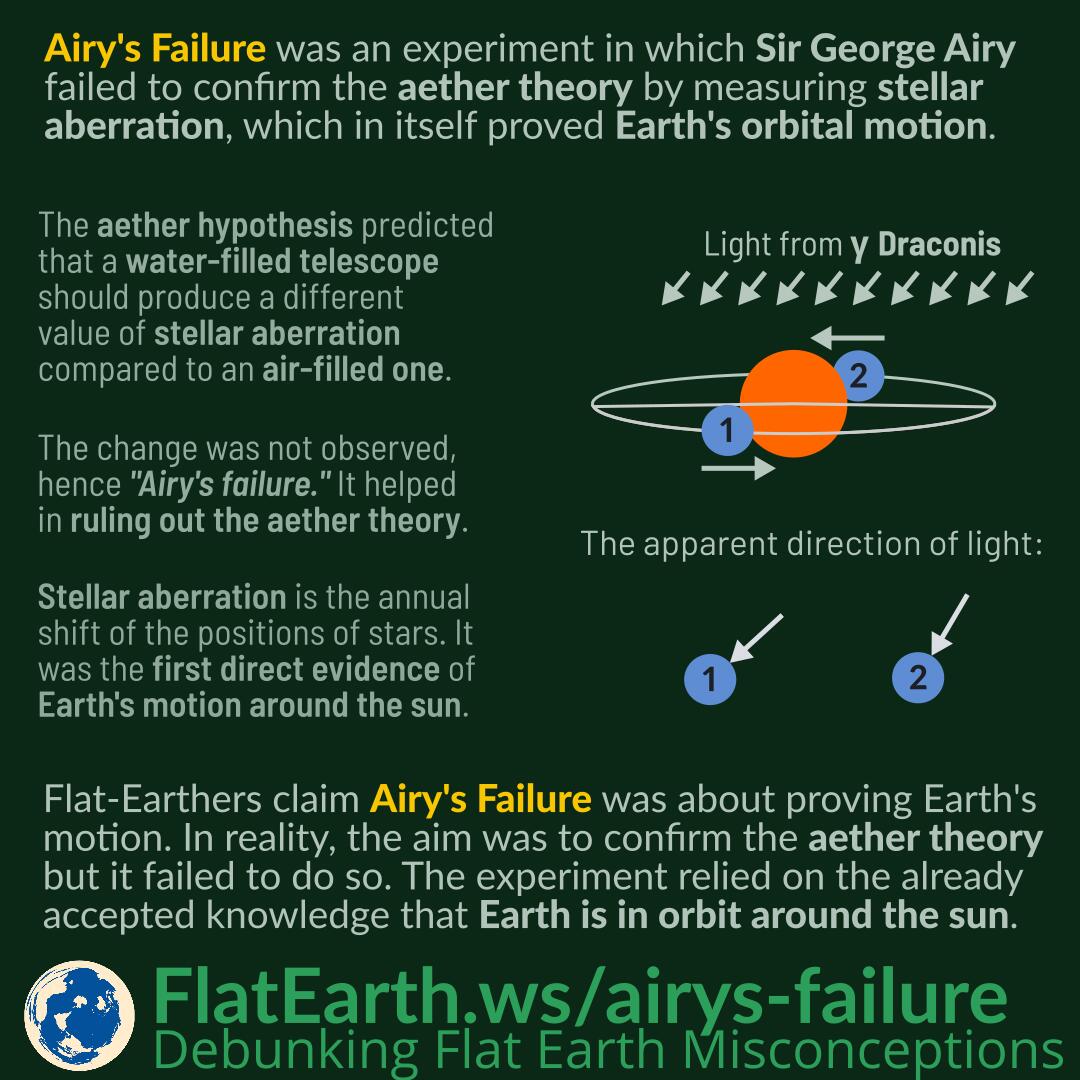Airy’s Failure was an experiment performed in 1871 in which Sir George Biddell Airy failed to confirm the aether theory by measuring stellar aberration. The phenomenon of stellar aberration, in itself, was the first direct evidence of Earth’s motion around the sun.
Flat-Earthers claim that the “failure” in “Airy’s Failure” is the failure of proving the motion of Earth. In reality, the experiment aimed to confirm the aether theory. The “failure” was in proving the aether theory. The experiment relied on the already accepted knowledge that Earth is in orbit around the sun.
The aether drag hypothesis predicted that a water-filled telescope should produce a different value of stellar aberration compared to an air-filled one. The change was not observed, hence the name “Airy’s failure.” The experiment helped in ruling out the aether theory.
Meanwhile, the phenomenon of stellar aberration is the annual shift of the apparent positions of stars. It was the first direct evidence of Earth’s motion around the sun, first observed in 1727 by James Bradley.
Sir Airy himself was very much aware of this fact, quite obviously. This is from the first paragraph of his publication:
“The subject to which attention is particularly called is the effect that will be produced on the apparent amount of that angular displacement of a star or planet which is caused by the Earth’s motion of translation, and is known as the Aberration of Light.”
References
- Luminiferous aether – Wikipedia
- On a supposed alteration in the amount of Astronomical Aberration of Light, produced by the passage of the Light through a considerable thickness of Refracting Medium. – George Biddell Airy
- The Classical Interpretation of Annual Aberration
- Does Airy’s failure prove the Earth really is flat? – Quora


